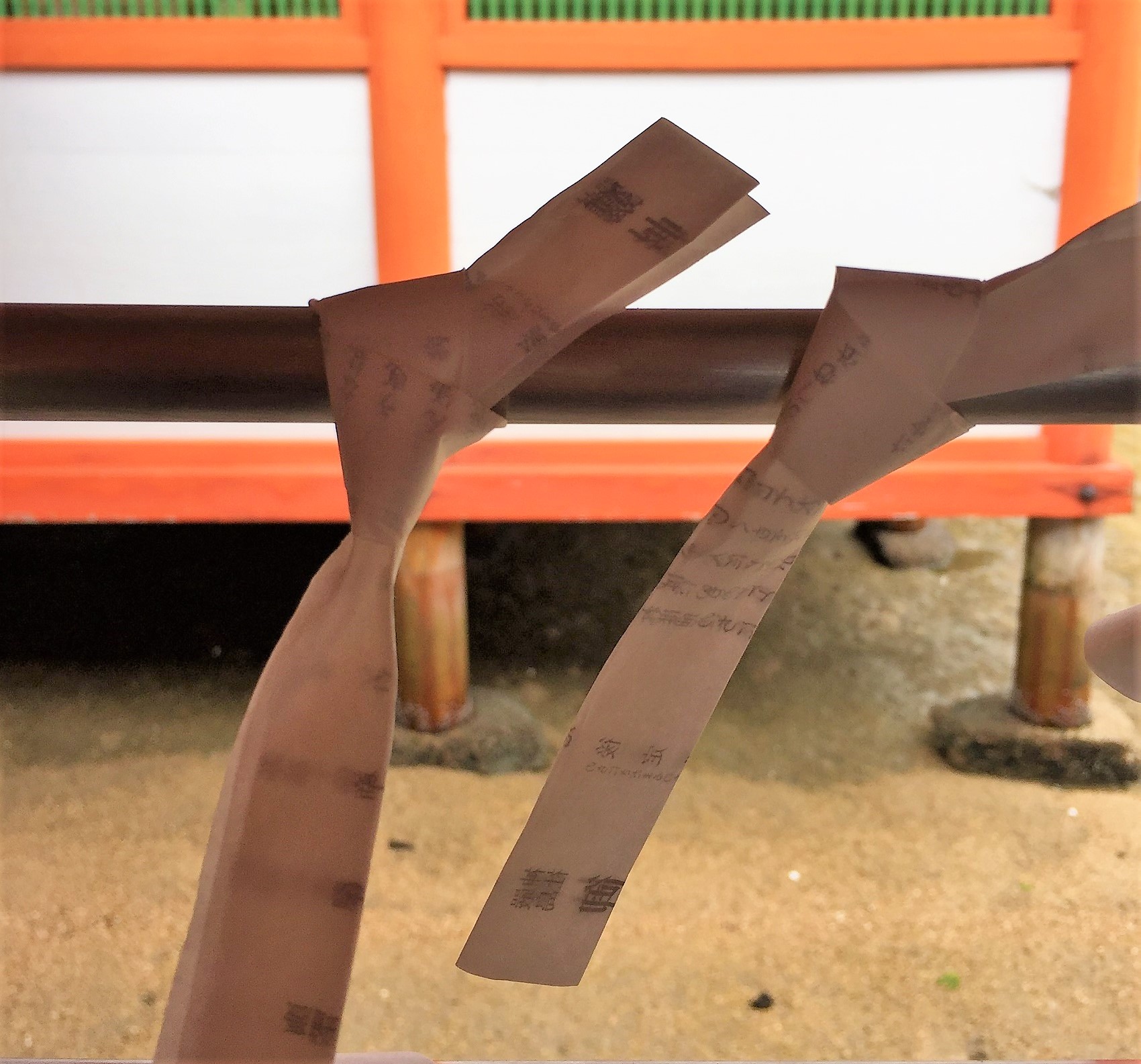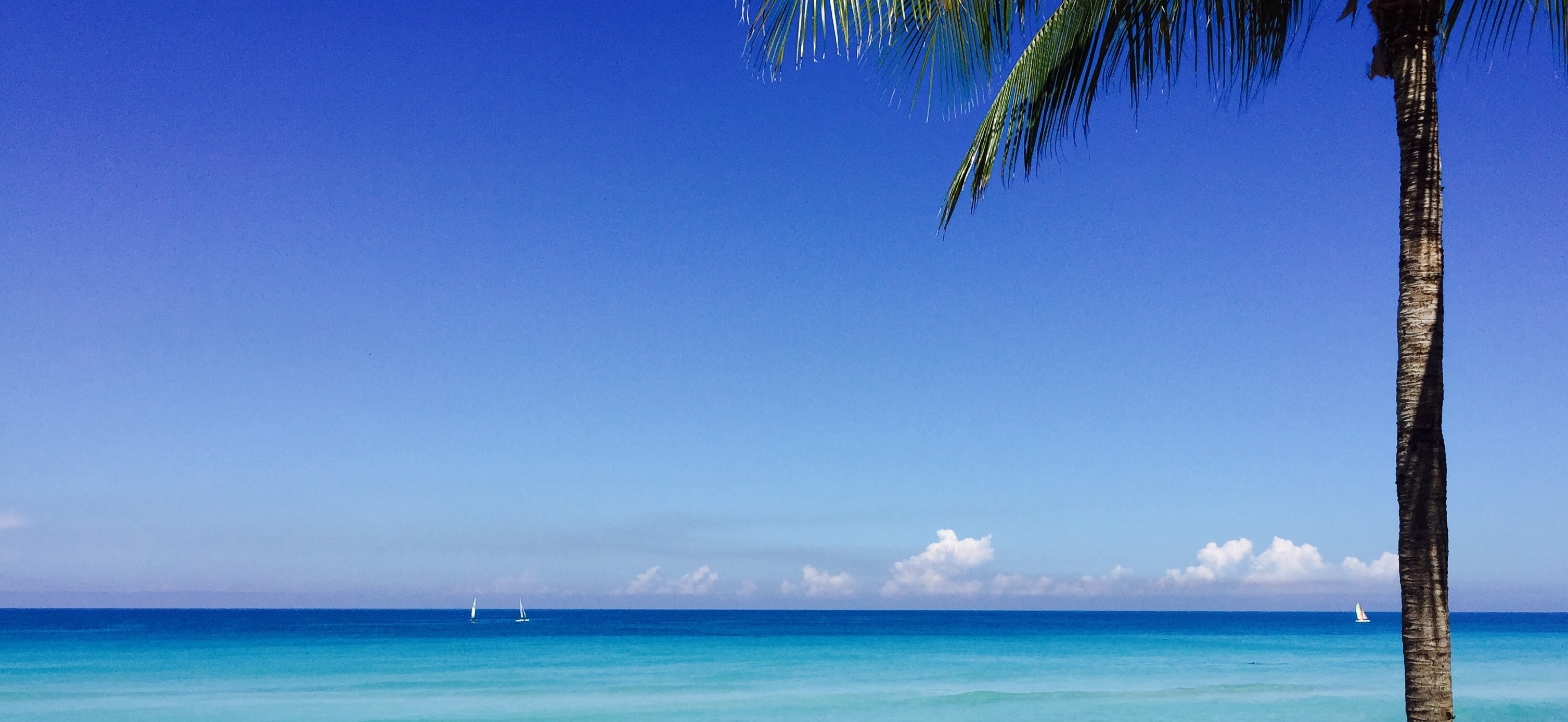Our next destination was Hiroshima. No matter who you talk to or where you are in the world, the name Hiroshima will forever be associated with death and destruction.
But the city we found had almost no trace of that. The streets are tree-lined and beautiful, pretty shops and lush bakeries are everywhere and the people are the friendliest in all of Japan. There was none of the rush we experienced in Tokyo or Kyoto.
During the next two days we walked everywhere in this small but spacious city. The Atomic Bomb Dome in the centre of town is a stark reminder of the destruction inflicted on the people and city. Today, as the Hiroshima Peace Memorial, it is a symbol of peace and hope.
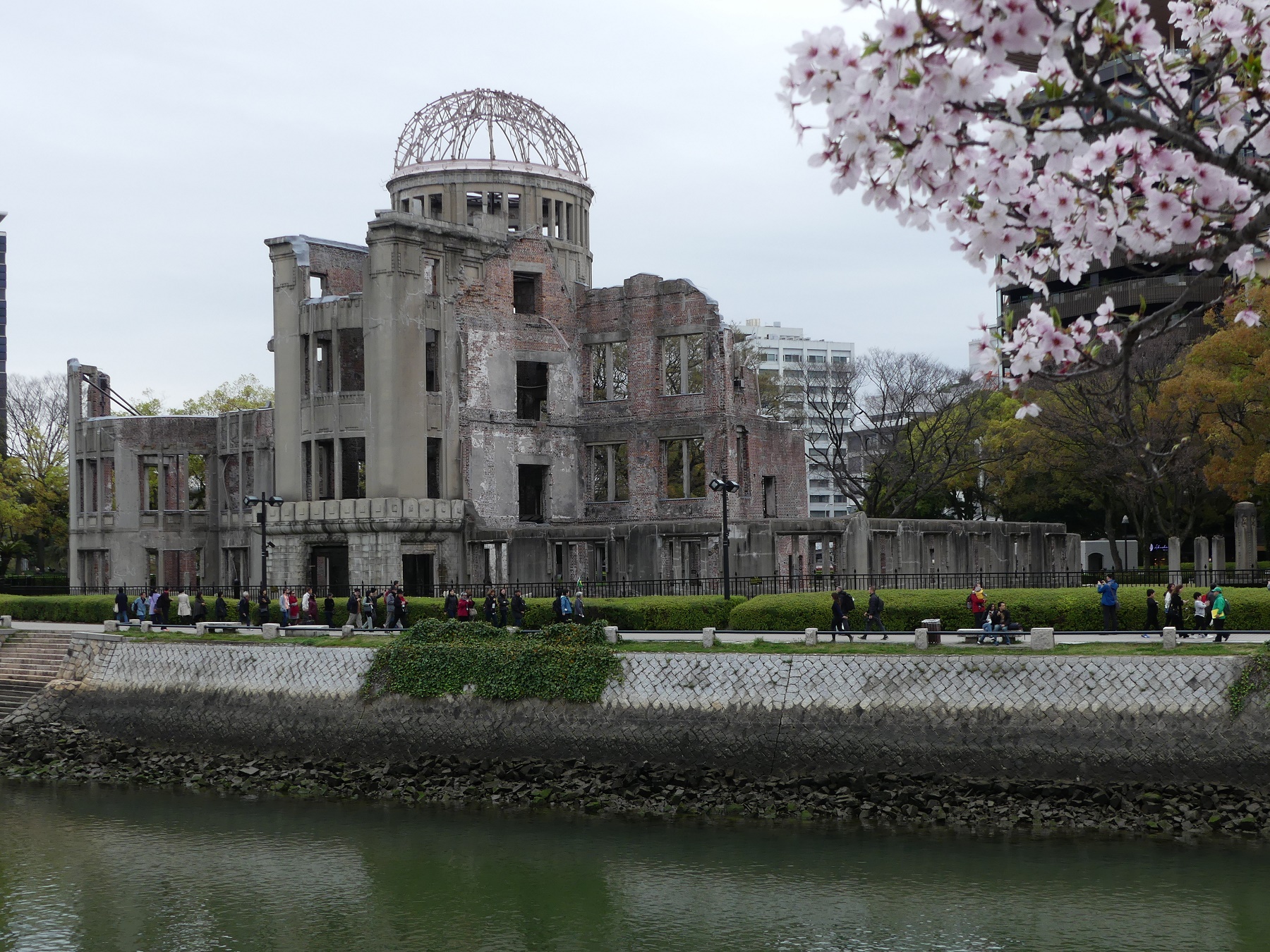
The original Product Exhibition Hall was built in 1915 and had a distinctive dome at the highest part of the building. Despite being a mere 160m from the epicentre of the bomb, this building was the only structure left standing within a 2km radius of the epicentre. Its skeletal remains remind us of a city laid to waste and the immense suffering that followed: 70,000 people were killed instantly, another 70,000 suffered fatal injuries from the radiation.
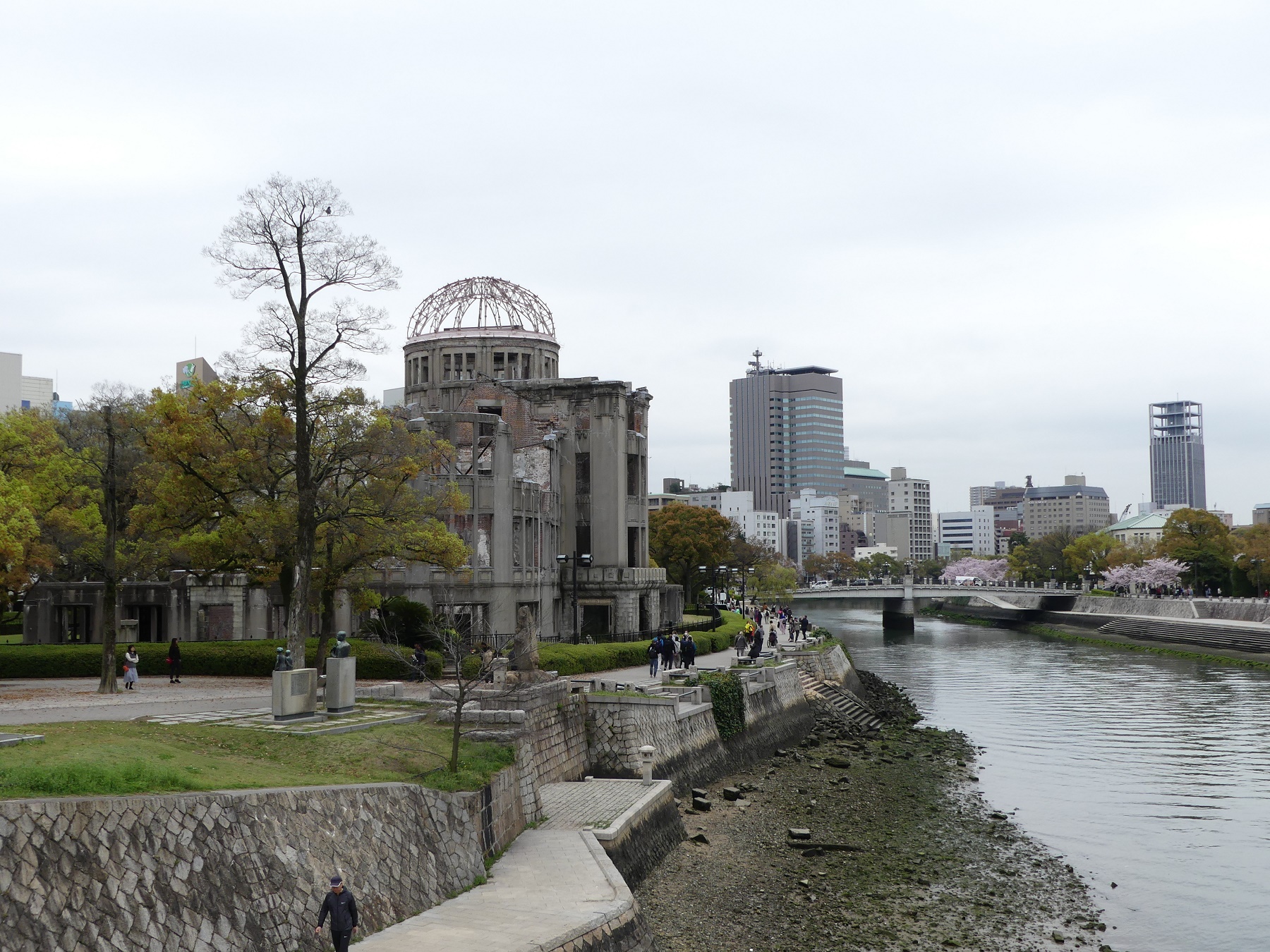
The Peace Memorial Park near the Dome was incredibly peaceful with beautiful tulip gardens and filled with cherry blossoms.
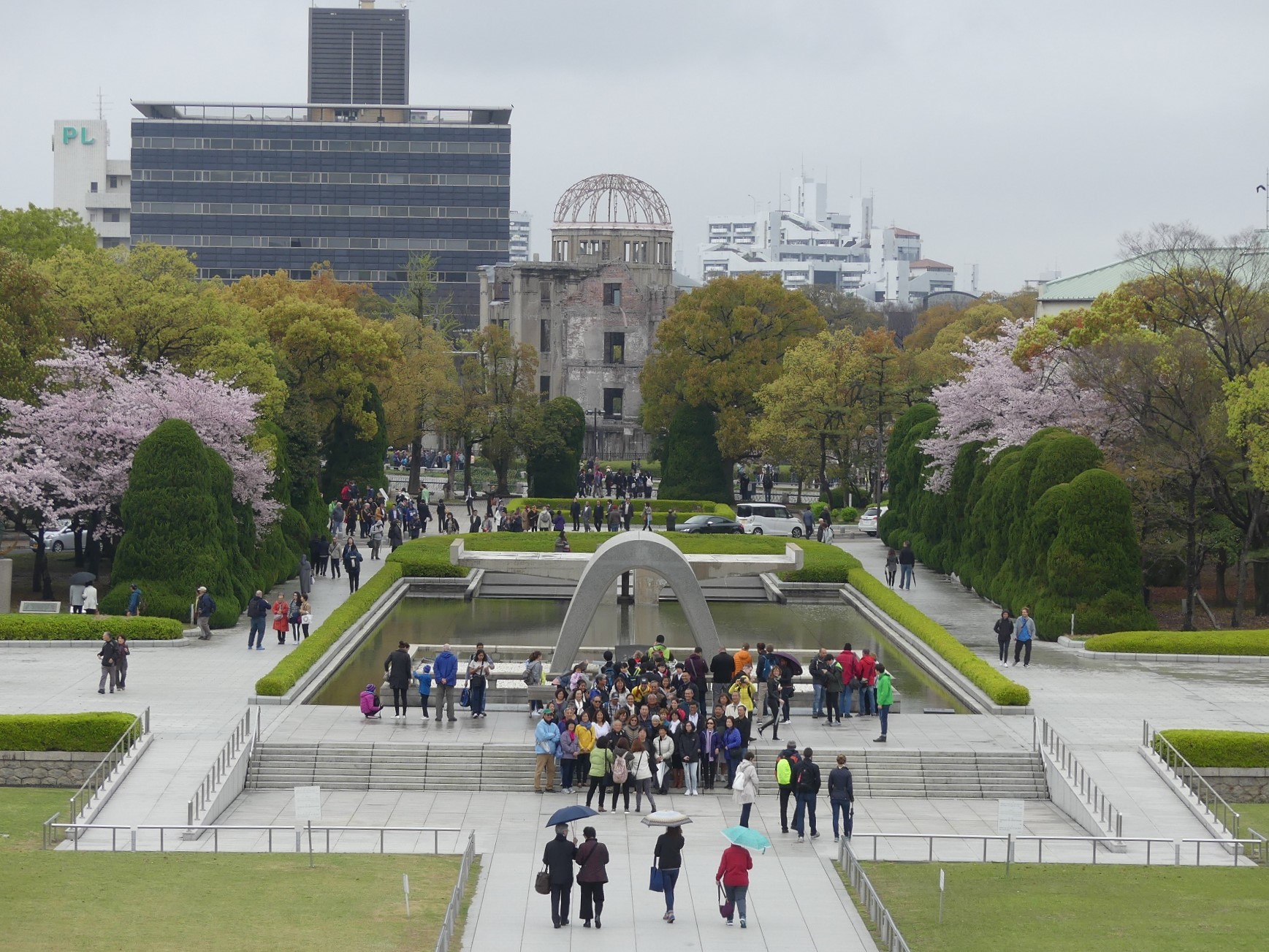
We strolled towards the Flame of Peace. It represents two wrists pushed together with open palms facing up, which reflects the victims who were unable to satisfy their thirst for water.
The Flame also represents the desire for the abolition of nuclear weapons and enduring world peace. It was lit on 1 August 1964 and the idea is that it will be put out once the world is completely rid of nuclear weapons. It has burned continuously since 1964 and I fear it will burn forever.
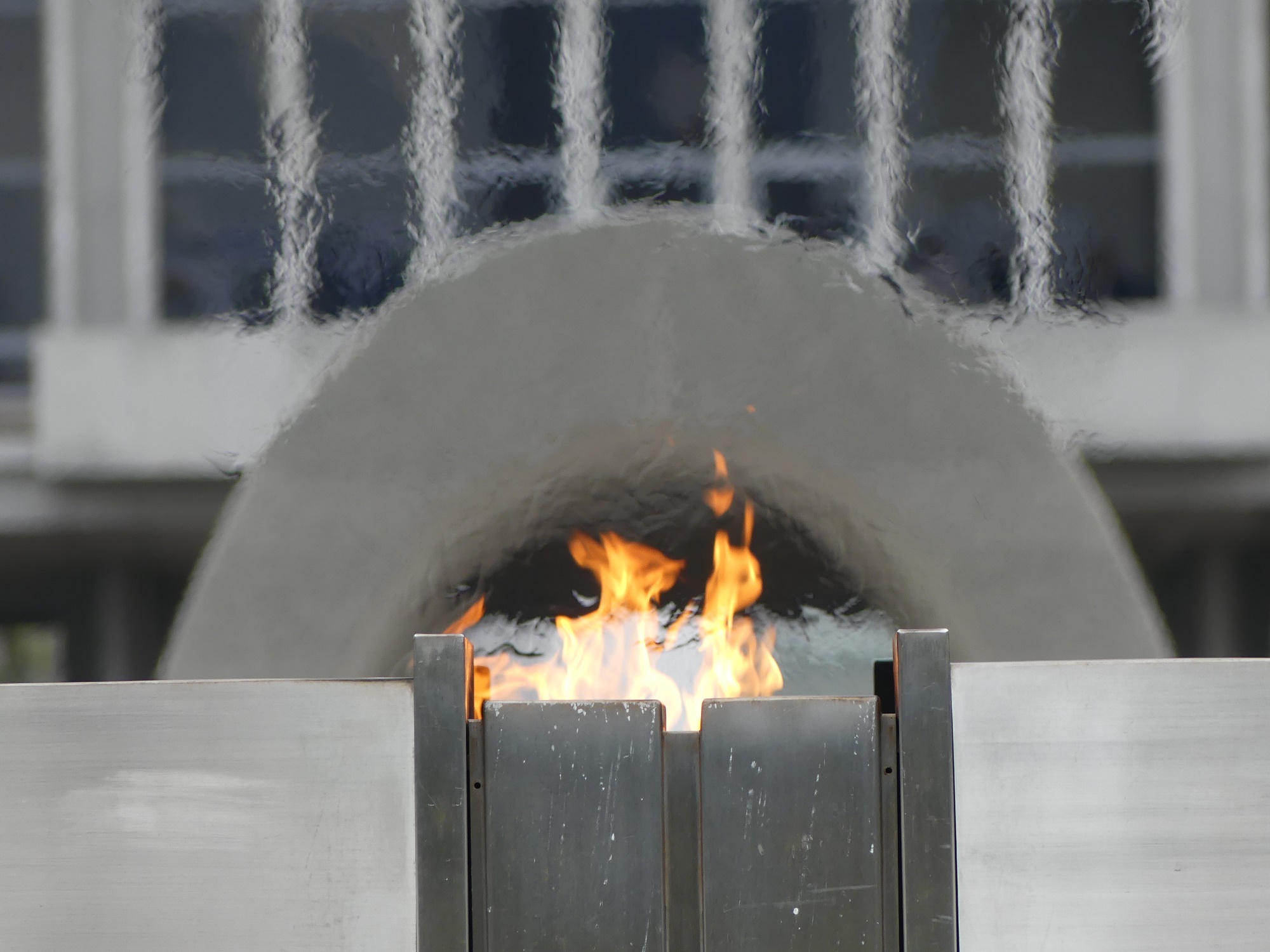
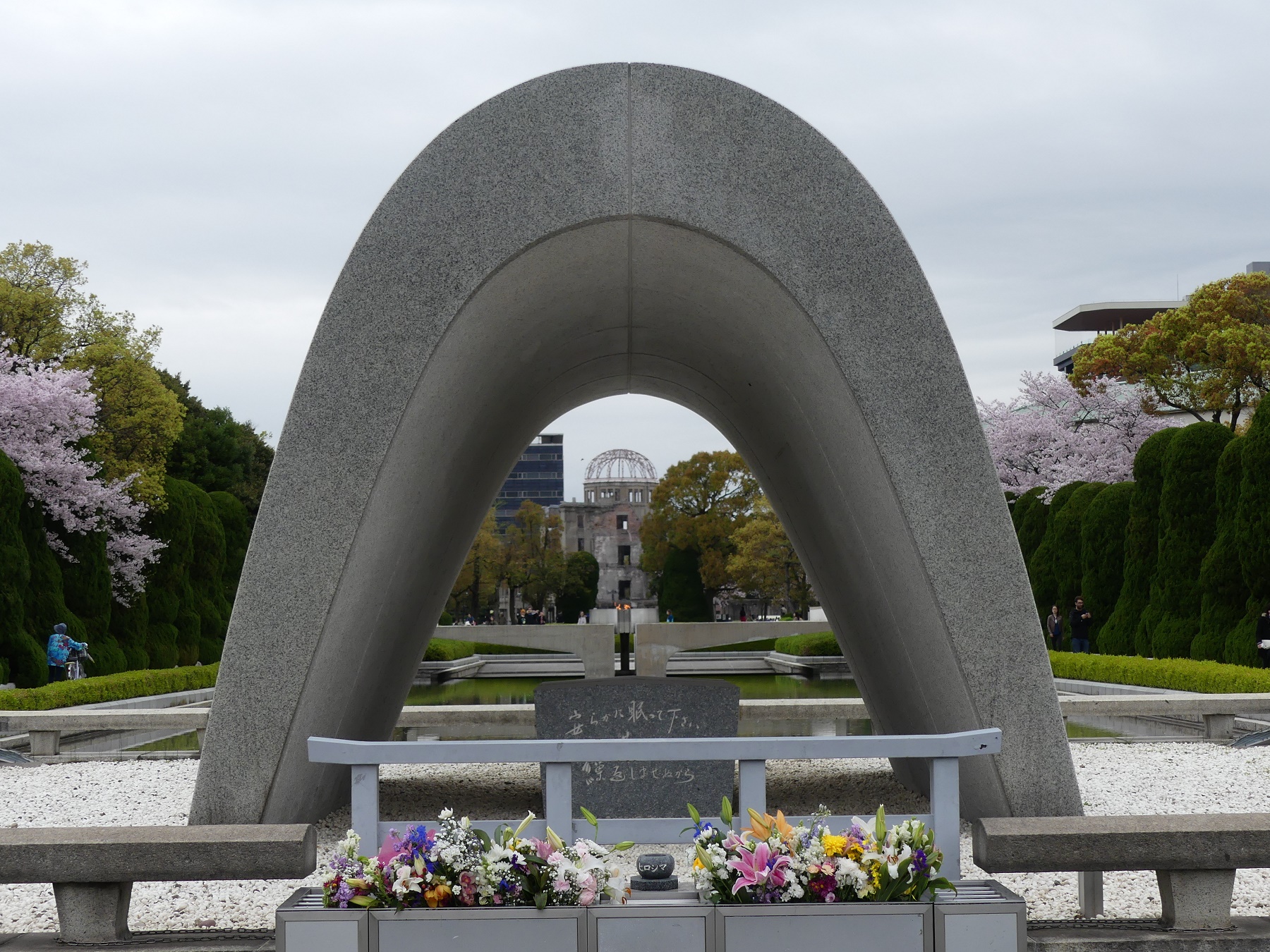
The Hiroshima Peace Memorial Museum was a harrowing yet positive experience of a city that rose from total destruction. They have artefacts from 1945 that are still radioactive.
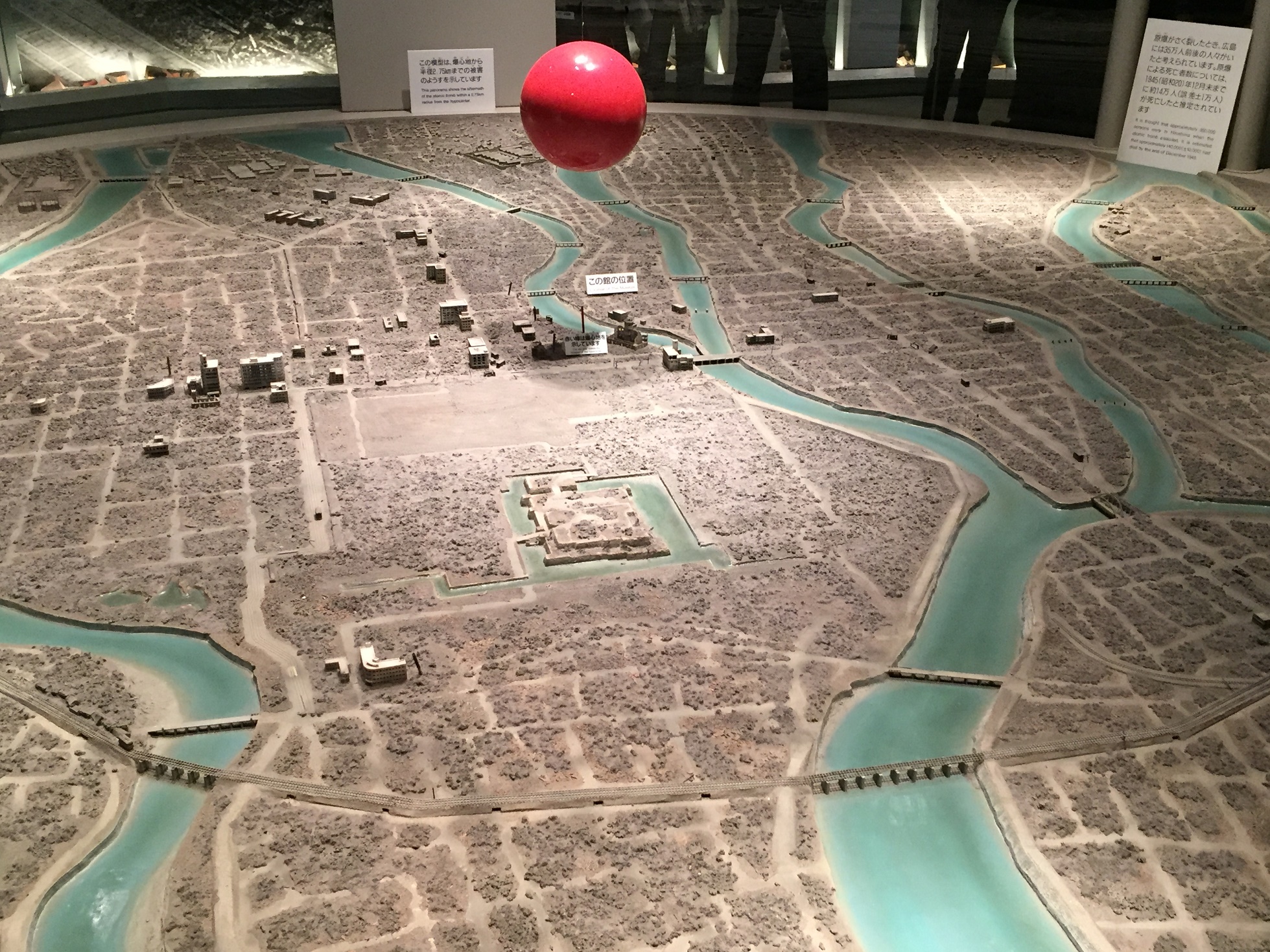
The position of the bomb, relative to the city
The museum tells the story of the destruction with heart-breaking pictures and original items, such as clothes, a pocket watch that stopped at 8.15am (the time of the explosion on 6 August) and a tricycle that a toddler was riding that morning. Each item embodies the grief, the anger and the pain of real people.
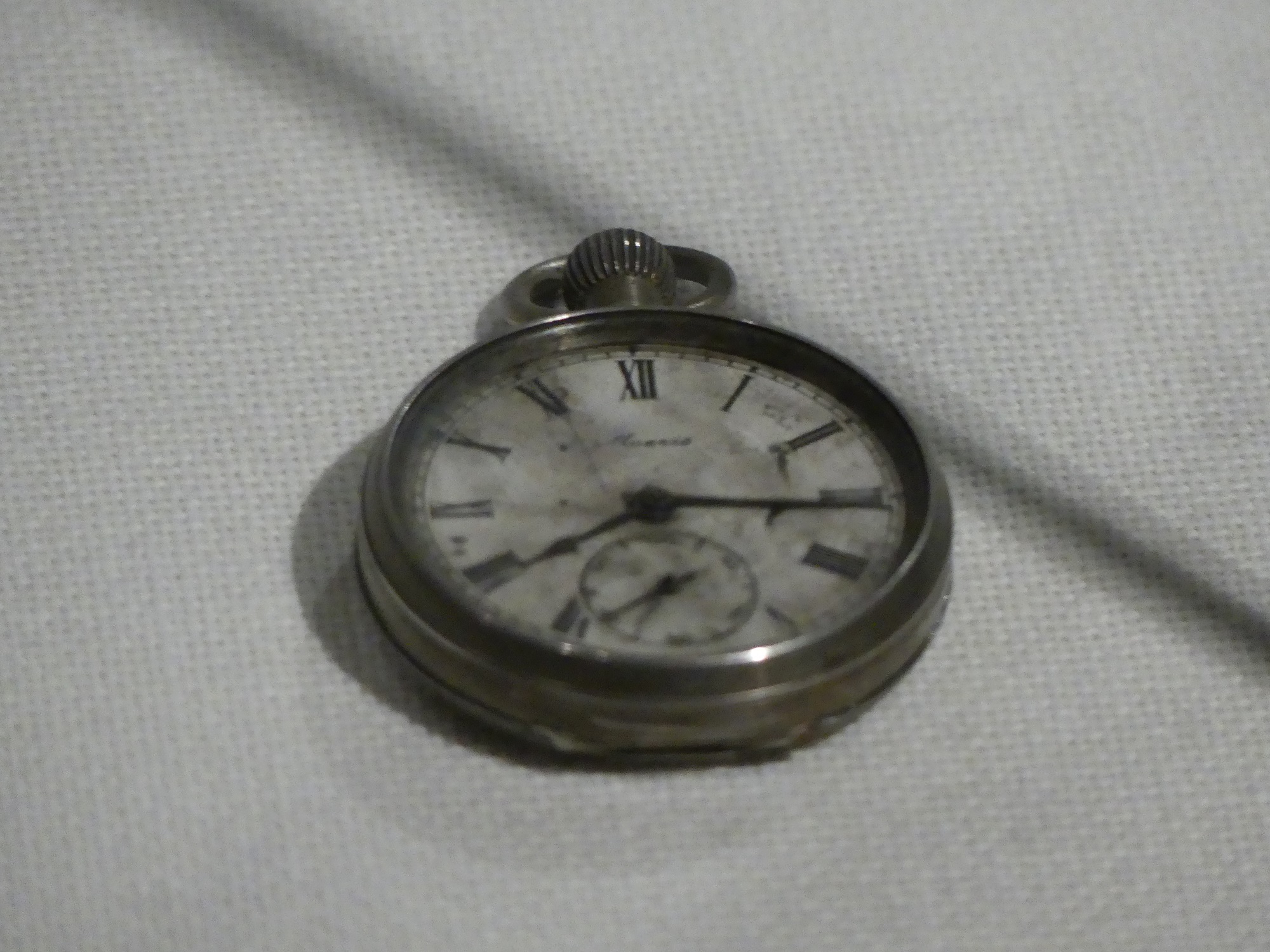
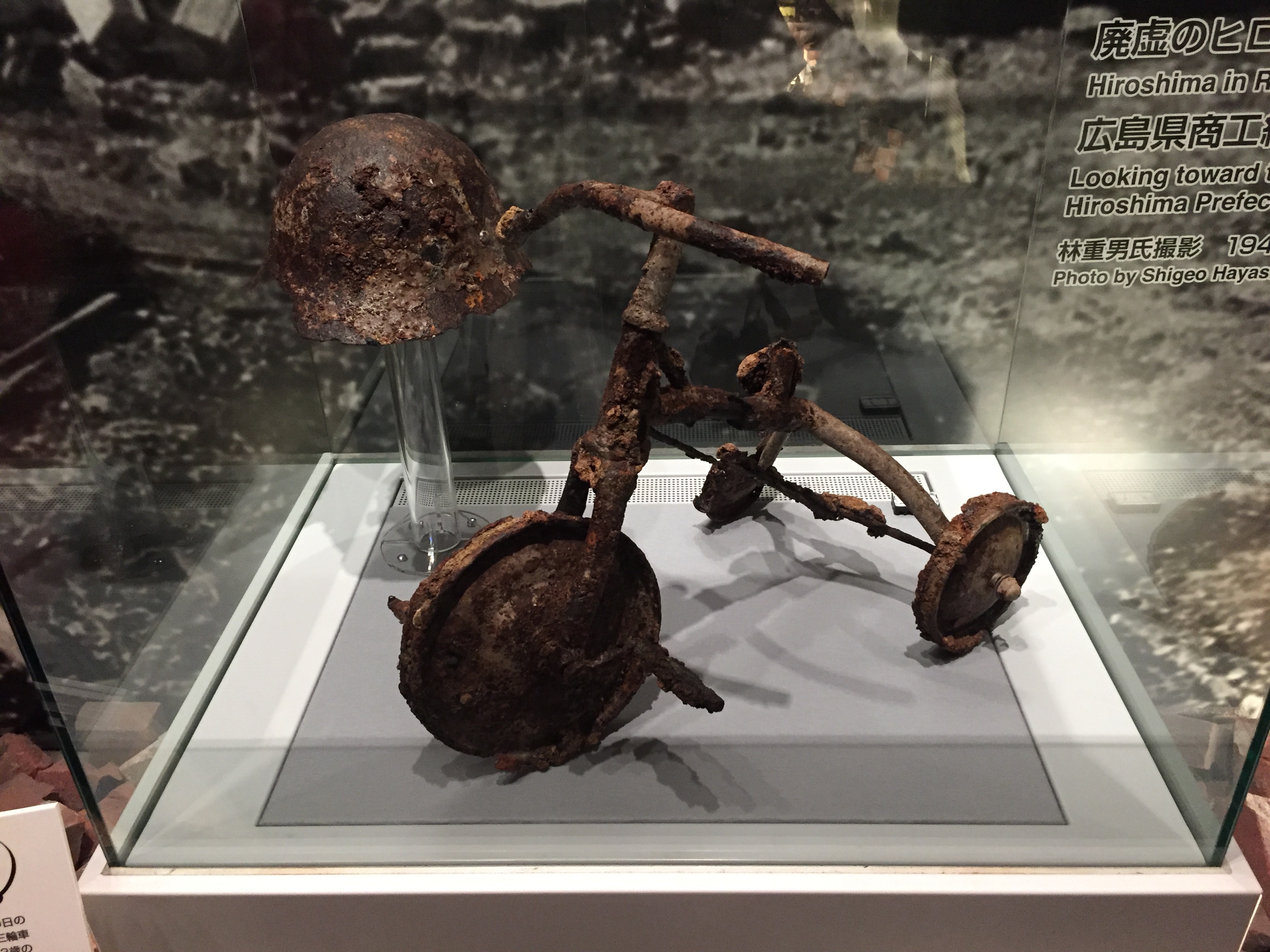
One of the most striking exhibits was a simple set of stone steps from the Sumitomo Bank about 260m from the hypocentre. The stone of the steps was whitened by the heat rays from the blast – except for where a person was sitting. That part remains dark like a shadow etched into the stone.
Today Hiroshima is a city that stands for peace. Every street, every park is a memorial for what happened here. It seems silly to even contemplate launching another weapon of such destruction again, but I fear people forget the pain it has caused in the past.
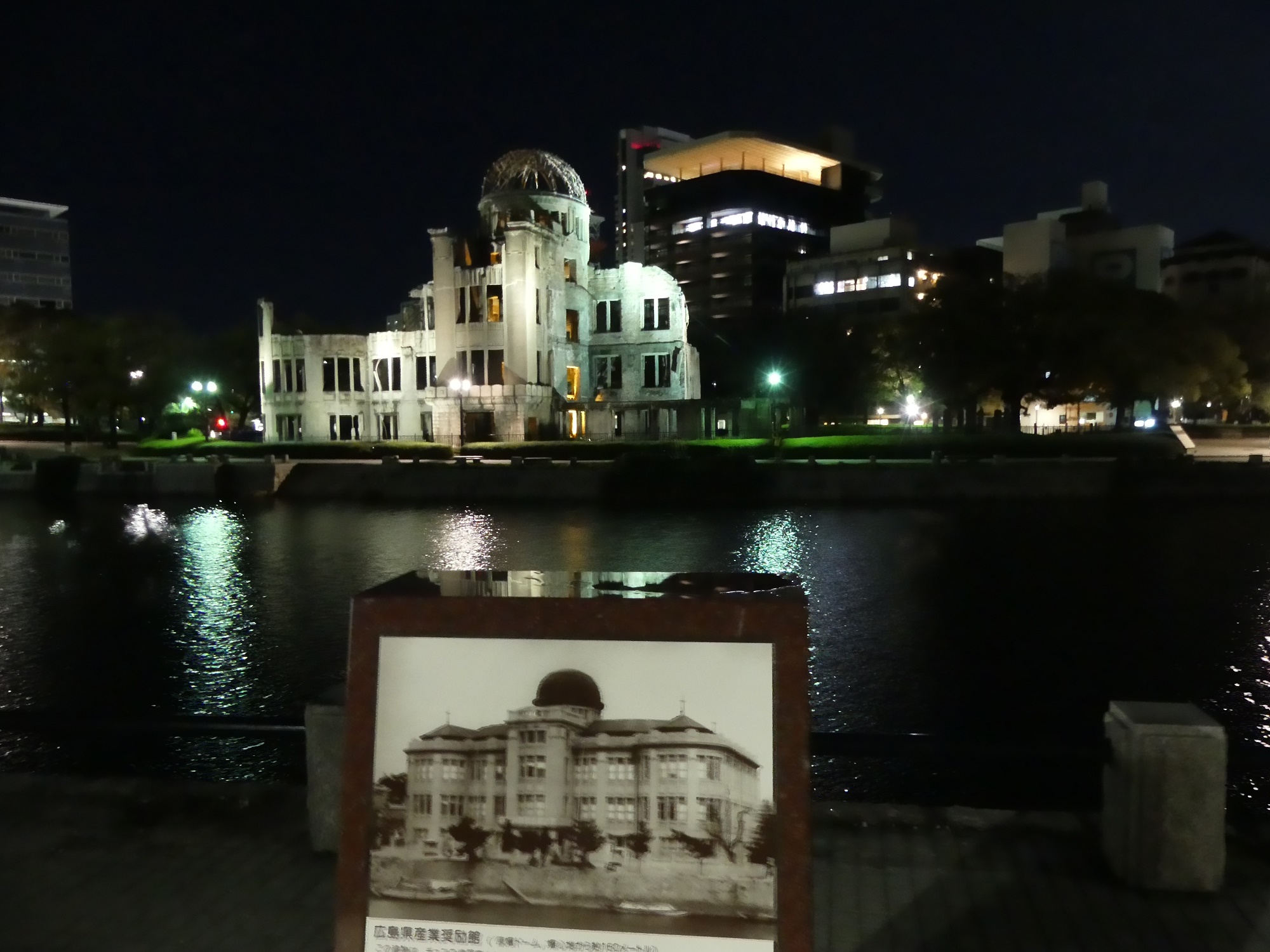
Before and after the bomb
We had one more stop in Hiroshima – the Torii gate at Itsukushima Shrine. Unfortunately we woke up to rain, but were excited to see one of the “postcard pictures” of Japan. You have definitely seen the photo – a huge 16m orange gate with the island’s Mount Misen in the background. It is classified as one of the Three Views of Japan.
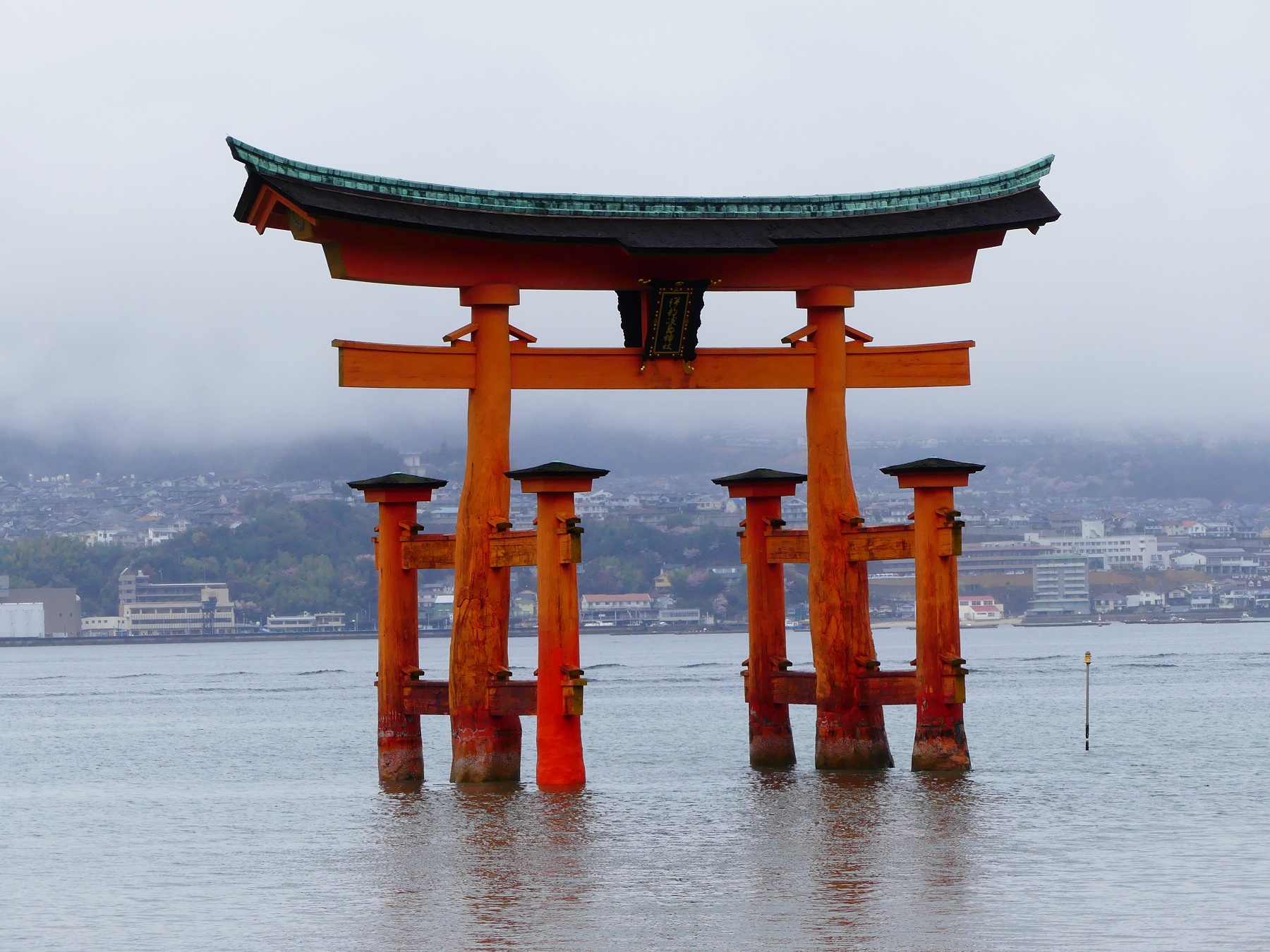
Geared with umbrellas, we jumped on the train to Miyajima island in Hiroshima Bay. The gate itself has been in place since the 11th century but the current gate dates from 1875. We walked through the shrine which allowed us some great photos of the gate at high tide. It was still a bit wet, but meant the Torii itself looked quite mystical with a misty backdrop of the grey sea and sky. It was hard to take your eyes away from it.
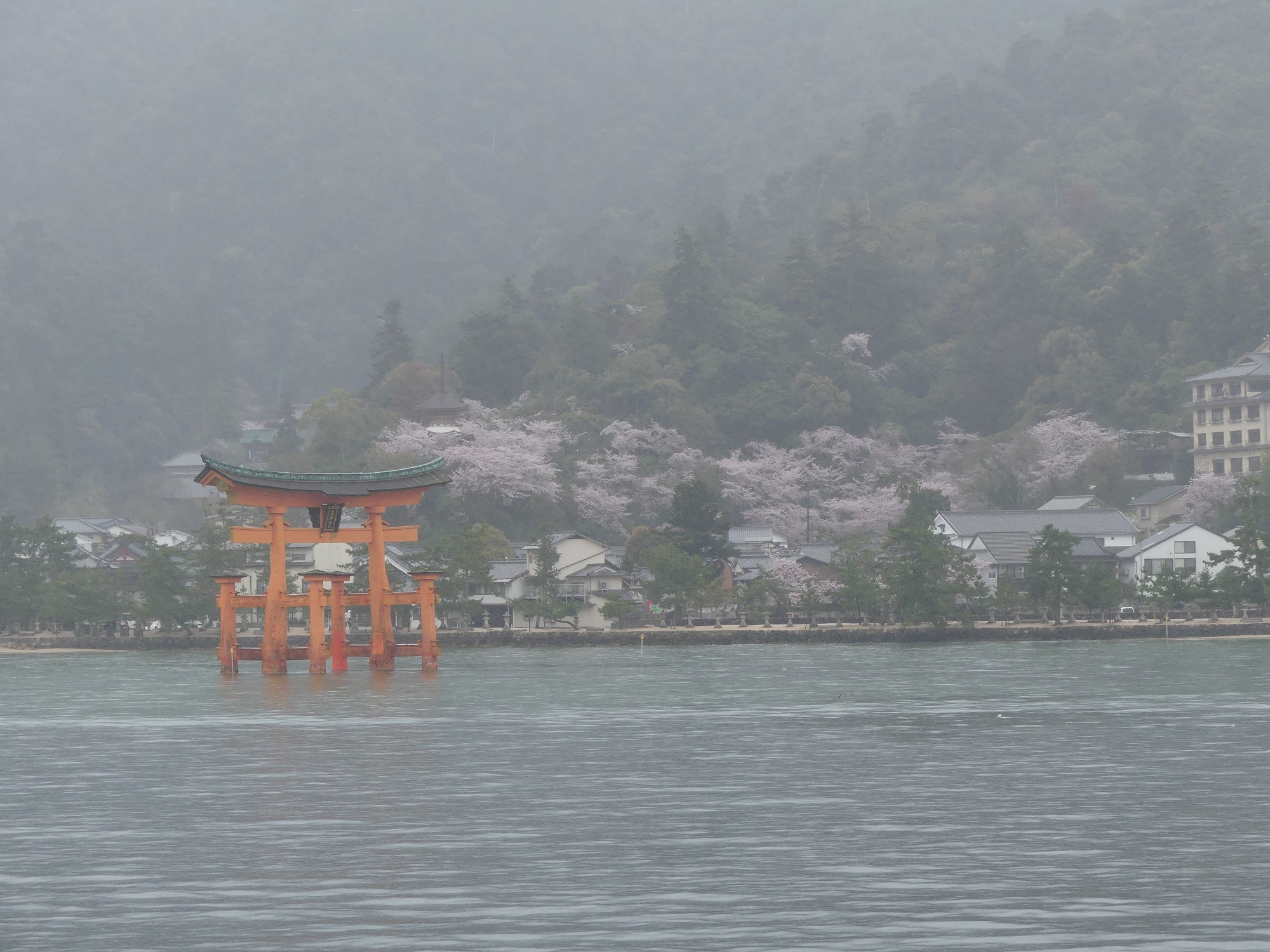
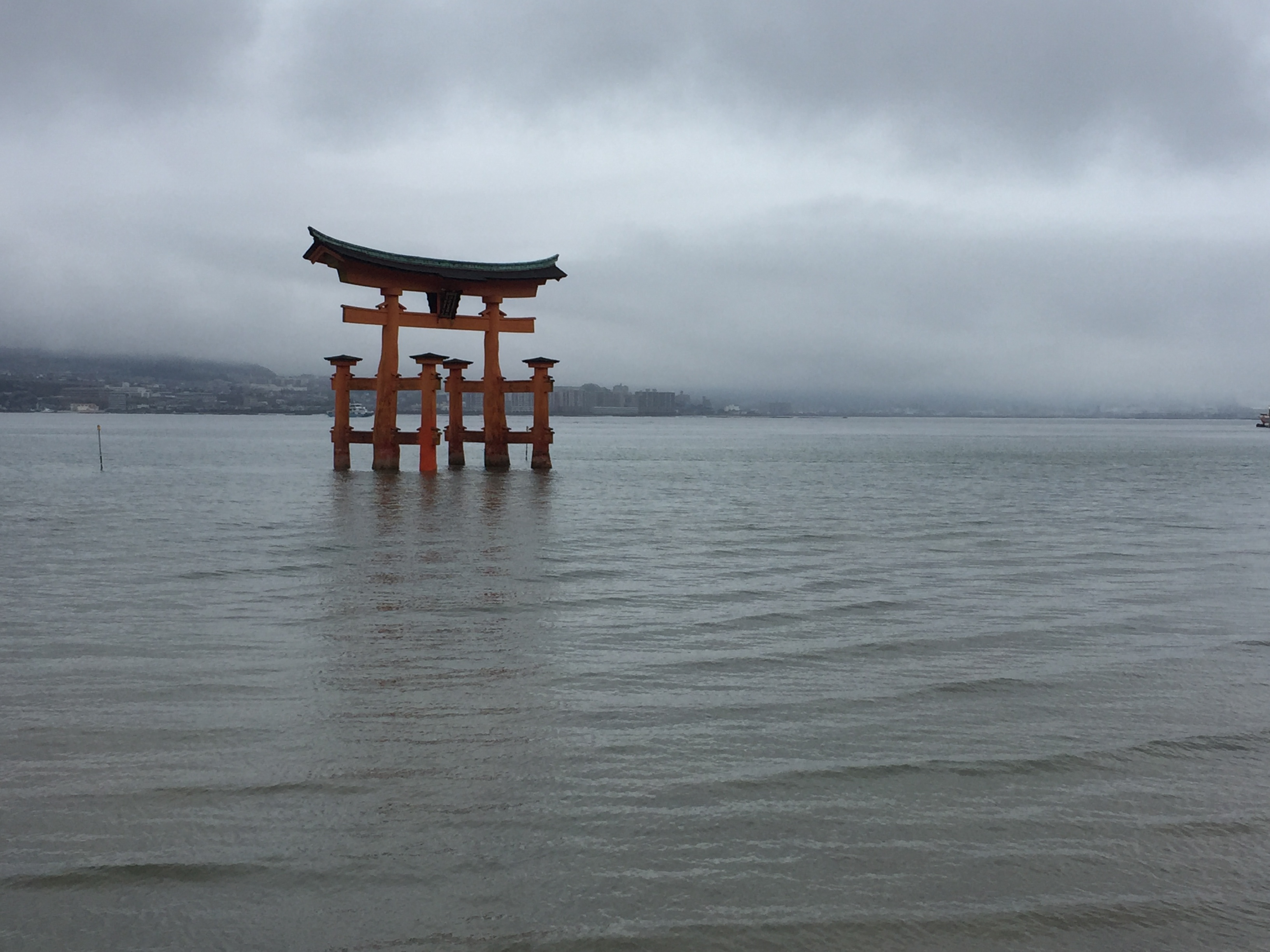
Unfortunately, I again felt slightly abused. The gate can be seen from almost anywhere on the island; it is only about 50m out to sea and you can walk to it at low-tide. The Shrine was nothing more than a hut with a statue and a pier into the ocean. Surely a shrine is a religious building? This just seemed like a way to scalp money from tourists while selling them souvenirs. In fact the area selling “religious artefacts and souvenirs” was the biggest building in the shrine.
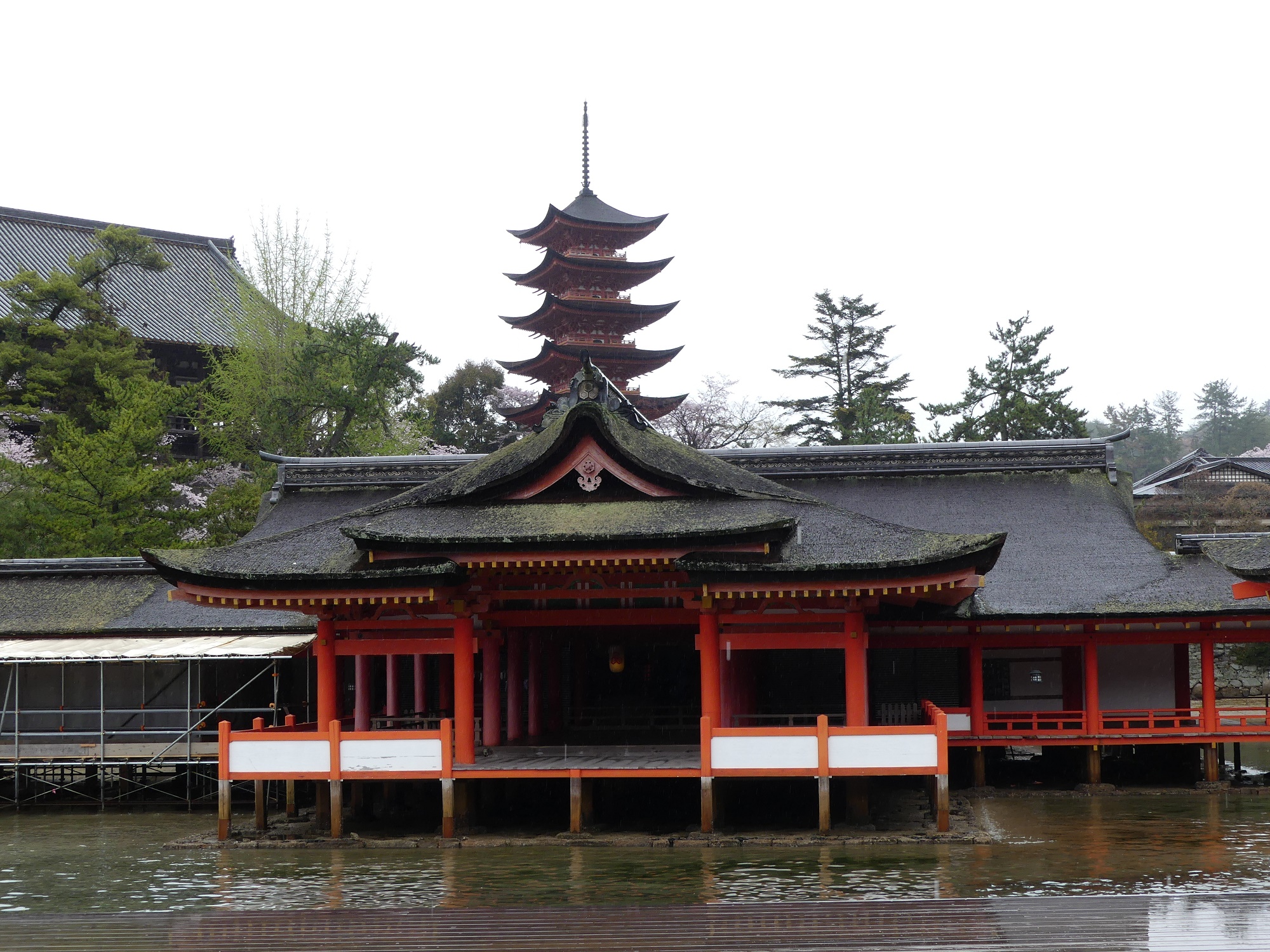
To take away from my annoyance we decided to “consult” our fortunes once more. This fortune teller booth was very similar to all the others in these shrines, but this time Adrie convinced me to actually pay my 100 Yen. The results were all in Japanese! We stopped at least half a dozen people asking them to translate but no-one could speak English. All I could establish was that my fortune was very good – a big thumbs up in fact. Adrie’s… not so much. We tied our fortunes onto the wooden structure and are still keeping fingers crossed!
